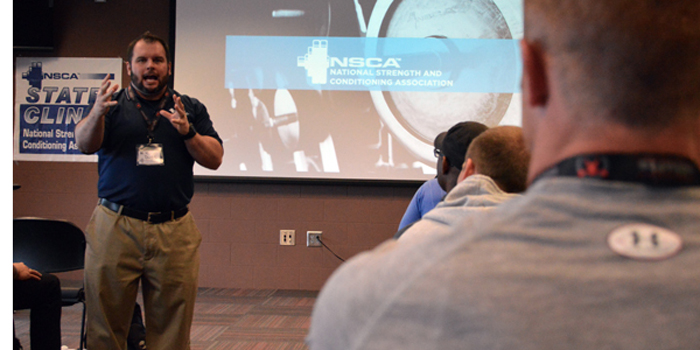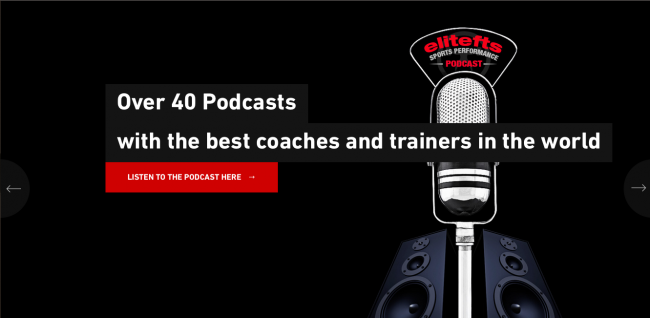
So it happens every time I present at a conference. I was fortunate to have a lot of positive comments, but when my colleagues would ask me how I thought it went, I always give the same reaction.
"...meh."
Believe me, there is never a time where I look back and think a presentation went great. I do feel I am improving as a speaker, but still have a long way to go. It seems like most of the issues with the presentation go beyond a joke flopping or me talking too fast. It almost always stems from the topic itself. I am not trying to let myself off the hook. I am the one who chose the topic and formulated the presentation from it. There are just a few mistakes I have made in the past that I need to address the next time around.
1. The Topic is too Broad
This is the presentation you are doing and you get the "10 minute" signal and you're only halfway through. This is especially true when anyone presents on their training philosophy. There are so many factors in the development and implementation of training, that it is virtually impossible to get through everything in 50 or even 80 minutes. This is especially true for any sports performance programming. With so many training parameters and variables present that effect programming decisions, it is difficult to be thorough with explanation and provide reasoning.
A more narrow topic will allow the presenter to:
- provide more concrete details and provide the "how" and not just the "what"
- a deeper, more relatable rationale to provide the "why"
- give more experienced-based examples that can be key ignitors for the audience to relate to
The challenge for any presenter is to narrow the topic without disassociating the potential audience. Presenting on "Post-Activation Potentiation training for the Elite Female High School Discus Throwers During the Competitive Season" may not quite hit a broad enough audience (See #4). But, there are a few ways you can narrow your topic and still keep it appealing to the broader coaching community.
Narrow by Sport. Coaches of other sports will still benefit, but your examples and some key training concepts are more focused when presenting.
Narrow by Season. Depending on your audience, training during different times of the season will pose different challenges. The particular time of year you present can help with what sport and season to present on. For example, presenting on Lacrosse off-season training would make more sense to be done before the Fall starts to give coaches time to digest and implement what they've taken from you.
Narrow by Fitness Quality. Presenting on just speed, agility, maximal strength, mobility, etc. can allow you to comprehensively cover the topic; especially when that topic is further reduced by another factor. Speed training for Soccer or Conditioning for basketball can allow the presenter to dive deeper into the methodology as opposed to listing sets and reps.
The key is to narrow the topic enough to provide an in-depth presentation with detailed information and the rationale behind it. At the same time, the speaker should present principles behind the methodology to improve reliability to a broader audience.
2. The Topic is too Vague
This goes along with #1 but is not quite the same. Presentations often deal with a narrow topic but are not as clear or definitive. This was one of the issues with my topic on rotational power. Being vague often loses the audience before the presentation starts. People want to know what the presentation is about before they attend. This is even more critical when promoting a small clinic where the speakers alone, drive the attendance.
A presentation title that is too vague is like a book without a table of contents. Here are a few tips to help with your topic, title, and presentation itself.
Topic: Avoid topics then lend itself to non-detailed theory. This was an issue with my last presentation. Rotational power is a non-distinct topic with a variety of application possibilities. Speed training without a distinct population, strength training without a training age, or programming without a specific sport, are all examples of leaving the actual content to the imagination.
Title: This needs to draw an audience without sounding too sales-like. Anytime a presentation or article is in a question form, it often lead itself to be ambiguous. "What all coaches need" or 5 ways to get better" type articles can spark an interest to click on an article, but when it comes to physically attending, some attendees won't take a risk. Nothing makes coaches more upset than sitting through a presentation they wouldn't have if they actually knew it was about.
Presentation: Keep with the basic 5 W questions when presenting may seem like an over-simplified approach, but can help avoid questions and the impression that you are not thorough with the topic.
- Who is the Audience?
- What is the Challenge?
- Why is this important to the audience?
- When should this be implemented?
- Where will this make an impact?
- How should coaches go about utilizing what they learned?
Make sure the topic is clear and distinctive and everyone involves understand what it is about.
3. The Audience is too Broad
The same issues happens with the articles I write. Sometimes the issues are focused on too small of a population to really connect with a broader audience. This may have been the case at the National Conference which has a great mix of coaches, educators, researchers, ATCs, PTs, tactical personnel, and trainers all in one group. With sports-specific topics, you may miss a large portion of those professionals. Even if these individuals work with athletes, they may not work with them in the setting that you do.
My experience in which I can help the most coaches deals with a internships, curriculum, and training in a team setting. Other than coaches, this background may not be relatable to other professions and forces me to expand my scope. As we all know, anytime you delve into topics outside your range, it takes more diligence to master the subject.
So there are a few strategies to help presenters relate their subject matter to a broader audience.
Give coaching strategies from basic to more in-depth. This will reach practitioners at multiple levels of experience and resources. Coaches in a team setting may require a generalized system. One-on-one trainers may need several levels to corrective strategies.
Give multiple examples of case studies. Even if they are theoretical, you are more likely to hit a chord with a larger variety or professionals if your examples cover multiple training ages, injury histories, athletic goals, etc.
Focus on Movement Quality as it Relates to Health and Performance. Regardless of the goals of the athlete, client, or patient; movement is the most important skill they all need. Better movement equates to improved performance and less injury regardless of the task required. By focusing on the quality of that movement, more professionals will have a personal investment in the message you are sending.
4. The 3 Rules of Writing Articles are Not Applied
Jordan Houser came up with 3 key points that are needed from just about every article. I wrote about it here:
Why Some Articles Suck and How to Fix Them
The basic premise is that every article or presentation needs to have 3 basic things; a rationale, credentials, and take-away(s).
- Why is this topic important (why should I care)?
- Who are you to tell me (your qualifications)?
- What can I get from this (teach me)?
Not sure if I did this effectively during my presentation on rotational power, especially with 1 and 3. The problem started when I was unable to present a problem. Yes, almost all sports require rotational power to some degree, but the extent of that need needed to be communicated better in my opinion. A fairly easy checklist when it comes to creating a rationale for sports performance would cover this basic question and its derevitives.
This is important because...
- it will improve performance
- it will reduce injuries
- it will be logistically feasible
- it will be can be objectively measured
- there is a system to regress and progress
The most important part of any presentation is to give all of yourself and ensure the audience has a better knowledge base with more tools in their "toolbox". Those take-away points must be established first and foremost and must drive the presentation.
The next log post will be based on my NSCA National Conference presentation on rotational power.
TRAINING
TUESDAY
Power Squat
- 5 plates each side for 3
- 4 plates each side for 3
- 3 plates each side for 3
Seated Leg Curl
1x20
Bench Press
150 x 20, 15, 10
Low Cable Row
150 x8, 130 x8, 110 x 8, 90 x8
Machine Dip 1 x20
Face Pulls 1 x20
FRIDAY
Overhead Press
135 x 10, 10, 8
supersetted with...
Machine Rows & Face Pulls x 10, x20









